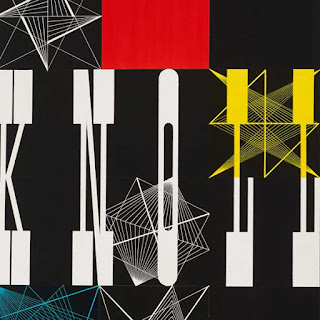I’m old enough to have remembered the sixties. Just a little tyke then, I remember waiting patiently after dinner for the Monkeys to hit the television airways or the much less mad-cap Partridge Family on Friday nights. But with all that groovy felling going around then one has to remember how it all came about. The post war baby boomers became teenage and young adults as this generation's vision was about to take control.
We were no longer content to be carbon copies of our parents. My girlfriend’s bumper sticker stated “Question Authority” as this was a period devoted to change. Looking at design in the sixties it becomes apparent that the Idea of form and function was set free to expand as that generation did.
No surprise that art and design internationally reflected the mood of a decade of freedom, permissiveness and progress. The psychedelic sixties poster had hidden messages within that avoided any connection with an older generation.
While the Who were singing My Generation, a young John Kennedy spoke of landing on the moon in his famous speech on May 25, 1961. Fonts took on a space-aged look fueled by the imagination of designers and even furniture took on this futuristic feel.
The movie 2001: A Space Odyssey captured the mood and spirit of this progressive period. The Stanley Kubrick sci-fi classic set the tone for optimism as a spirit of change was
in the air.
All of the psychedelic mood was reflected in periodicals and journals that promoted the free-spirit lifestyle. Magazines like OZ promoted a movement that became an international phenomenon. The term “anti-establishment” became the motto of the youth who fought against the traditional in favor of irreverence and fun. New York, Paris and London fast became the cultural capitals of this new found subculture thanks to our progress in mass communication.
The anti-establishment beliefs of the psychedelic era of the sixties and early seventies has similarities to those of the late nineteenth and early twentieth centuries. Seen as overly radical, both had no love for the mainstream culture.
Art Nouveau would use the organic shapes and forms inspired by the arts and crafts movement as a source of inspiration. With a closer look you can see these curvilinear forms duplicated in the bold color of the psychedelic posters. The psychedelic aesthetic finally maneuvered itself into all aspects of the culture. Visible in film, architecture, art and music as well as graphic design and fashion.
Pop Art was inspired by popular culture and consumerism that had grown exponentially in the previous decade. The movement's start can be traced back to the late fifties, but it wasn’t until the following decade that it would achieve the popular status of style.
Rejecting not only the idea of modernism, but also the values it represented, the movement questioned "good design" in a world full of products and celebrity. The pop artist brought a new vocabulary with bold forms and bright colors. Roy Lichtenstein and Andy Warhol were the key leaders of this consumer mimicry.
In the mid-sixties a more abstract style of art and graphics would emerge labeled Op Art. Short for optical arts, the style morphed out of the abstract expressionist movement reducing geometric forms to simulate movement. Starting first in Europe, and later the U.S., it had a strong influence in both graphic and interior design and became a visual banner for the seventies.






















































